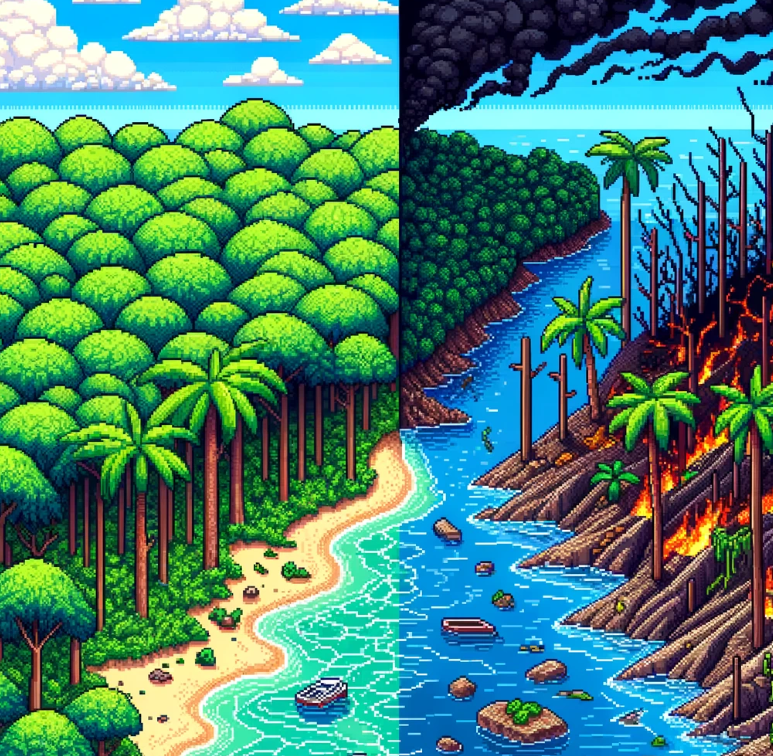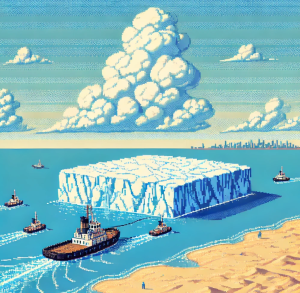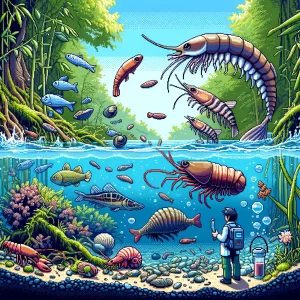
Mayotte’s Environmental Alarm: A Warning from a Rapidly Changing Island
A Tropical Paradise in Peril
Imagine a lush tropical island with vibrant green forests, crystalline waters, and diverse wildlife. Now, imagine that paradise slowly eroding away, its resources dwindling, and its ecosystems teetering on the brink of collapse. This is not a dystopian future—it’s happening right now on the French island of Mayotte.
Located in the Comoros Archipelago, Mayotte has seen a staggering transformation over the past two decades, driven by uncontrolled migration and rapid population growth. This once-thriving ecosystem is now grappling with severe deforestation, soil erosion, and a looming water crisis. The story of Mayotte is a stark reminder of how delicate our planet’s ecosystems truly are—and how quickly they can unravel.

An Island Under Pressure
Mayotte’s tale of environmental decline begins with a sharp rise in population. Between 2002 and 2021, the island’s official population surged by 80%, largely due to migration from neighboring islands like Madagascar and the Comoros. This influx of people, coupled with Mayotte’s change in status to a French department and European Union’s outermost region, led to increased illegal immigration and a population that far outstripped the island’s natural resources.
As the population grew, the demand for food and land skyrocketed. Traditional, sustainable farming practices—once the cornerstone of Mayotte’s agriculture—gave way to intensive monocultures of banana and cassava. Forests that had flourished for decades were swiftly cleared to make way for these crops, leading to an astonishing 3600% increase in deforestation rates between 2010 and 2014.
But the impact of this deforestation goes beyond the loss of trees. The removal of natural vegetation has set off a chain reaction of environmental degradation, most notably through accelerated soil erosion. In just ten years, erosion rates have increased by a staggering 300%, turning once-fertile land into barren, unstable terrain. This has not only stripped the soil of its nutrients but also led to the siltation of Mayotte’s reservoirs, threatening the island’s already limited water supply.
The Hidden Impact: DNA Tells the Story
To understand the full extent of Mayotte’s environmental crisis, researchers turned to a cutting-edge technique: sedimentary DNA (SedDNA) analysis. By analyzing DNA preserved in layers of sediment, scientists were able to reconstruct the island’s ecological history over the past decade. What they found was both alarming and illuminating.
SedDNA revealed that the erosion caused by deforestation and agricultural expansion had far-reaching effects on the island’s biodiversity. As the land was stripped bare, soil and plant material were washed into the island’s reservoirs, carrying with them DNA from a wide range of organisms. This influx of DNA allowed scientists to track changes in the island’s biological communities over time.
The results were striking. Between 2011 and 2021, the diversity of species detected in Mayotte’s sediments increased dramatically, particularly during two key periods of intense erosion: 2011–2015 and 2019–2021. This surge in biodiversity might seem like a positive development, but it actually highlights the disruption caused by erosion. As the landscape was fragmented and soil was displaced, new species were introduced to areas where they had never been before, fundamentally altering the island’s ecosystems.
One of the most surprising findings was the detection of DNA from terrestrial organisms—such as fungi, earthworms, and even primates—in aquatic environments. This cross-contamination is a direct result of the increased connectivity between land and water caused by erosion. As soil was washed away, it carried with it the DNA of countless species, depositing it in reservoirs and other water bodies. This not only altered the composition of aquatic ecosystems but also signaled a broader environmental upheaval.
A Water Crisis Looms
The environmental challenges facing Mayotte don’t end with deforestation and erosion. The island is also on the brink of a severe water crisis. Mayotte’s reservoirs, which supply drinking water to the island’s inhabitants, are rapidly filling with sediment, reducing their capacity and leading to frequent water shortages.
The situation is exacerbated by the increasing demand for water driven by the island’s growing population. Between 2011 and 2021, the volume of sediment in Mayotte’s reservoirs increased by 180%, leading to siltation and a decline in water quality. This has already caused several water crises, and with the island’s population expected to grow by another 40–145% by 2050, the pressure on Mayotte’s water resources will only intensify.
The Urgent Need for Action
Mayotte’s story is a cautionary tale for other tropical islands and regions facing similar challenges. The island’s rapid environmental decline underscores the urgent need for sustainable land management practices and conservation efforts. Without immediate action, Mayotte—and other regions like it—could face irreversible damage to their ecosystems and a permanent loss of biodiversity.
One of the most critical steps in addressing this crisis is to halt deforestation and restore natural vegetation. Reforestation efforts could help stabilize the soil, reduce erosion, and protect the island’s water resources. Additionally, promoting traditional, sustainable farming practices could reduce the environmental impact of agriculture while still meeting the food needs of the island’s population.
But conservation alone won’t be enough. As Mayotte’s population continues to grow, it’s essential to develop infrastructure and policies that can support this growth without further straining the island’s natural resources. This includes investing in water management systems, such as desalination plants and improved irrigation methods, to ensure that the island’s water supply can meet future demand.
Accelerating Challenges
The environmental crisis unfolding on Mayotte is a stark reminder that our planet’s ecosystems are more fragile than we might think. The rapid degradation of this small island serves as a microcosm of the broader challenges facing our world as population growth, climate change, and unsustainable practices continue to put pressure on our natural resources.
As we look to the future, we must learn from Mayotte’s experience and take proactive steps to protect our planet’s most vulnerable ecosystems. By working together to promote sustainable practices and conservation efforts, we can help ensure that islands like Mayotte—and the countless species that call them home—continue to thrive for generations to come.
Join the Conversation
What do you think are the most critical steps we can take to protect fragile ecosystems like those on Mayotte? How can we balance the need for economic development with the imperative to conserve our natural resources? Share your thoughts in the comments below!
Transform Your Science World:
Get the latest and most inspiring scientific updates with ‘This Week in Science’! Perfect for educators and science enthusiasts, our free weekly newsletter delivers groundbreaking research and stories that ignite your passion for learning and teaching. Sign up today and transform your approach to science. If you liked this blog, please share it! Your referrals help This Week in Science reach new readers.



